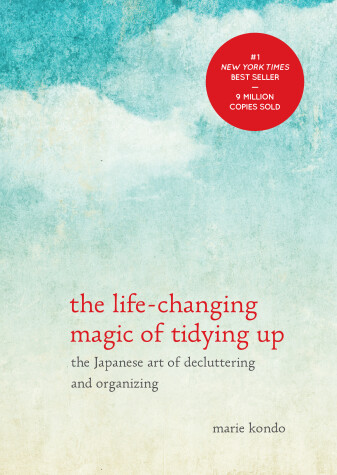Reviewed by Joséphine on
Initial thoughts: No doubt, Marie Kondō has become an expert when it comes to tidying. You can tell she's very passionate about the subject and her level of experimenting and researching is surely unsurpassed. She has her methods worked out in formulaic clarity that makes it really easy to follow along for anyone who's interested. A lot of her advice is similar to that of my mother's while growing up: get rid of things that have no more place in my life, it's better to get one dress I love than five that cost the same but I like only half a much, have a place for everything and return them there after use. On that front, I'm sure many parents have taught their own children this.
What makes the KonMari method (yep, based on her nickname) stand out is the emphasis on "joy". Does an item spark joy? Keep it. Does it not? Discard it. (Gift only if said item is something someone would be willing to buy for themselves.) The point is not to clutter one's life with items that don't bring joy. Sounds like a great principle to live by but not entirely sensible either. That's how she once came to discard a hammer, following which she use a pan as a substitute. She also snapped her favourite ruler in half because she no longer owned a screwdriver.
While she then proceeded to explain that joy isn't just an electric tingling feeling but could also manifest in the form of appreciation for an item making one's life easier, I thought she somewhat undermined the importance of utility. Of course, most of us don't need five hammers, but it's handy to keep one, even if it doesn't bring joy until the moment one needs it.
That being said, it's definitely helpful when riddled with cast off items that are kept purely out of feelings of obligation or even guilt. I finally had the heart to discard knitting needles that my grandmother gifted me when I was seven. One, they were bent and of no more use; two, I'm not an avid knitter. These are just one example of items that had been weighing me down. It also helped to envision what I hoped to achieve through tidying because that gave me something concrete to work towards to. When there's no purpose, that's when we're most likely to fail at anything, really.
Oh and one more thing, she advocates talking to each and every object. I understand talking to plants, dolls and stuffed toys people have had since they were kids and played make-believe with, but I'm not sold on talking to my clothes hangers. Neither do I feel the compulsion to thank depleted batteries for their service before binning them. Maybe I'm just not attuned to the "aura" (as she puts it) of my possessions but those are steps I skipped.
Reading updates
- Started reading
- 10 March, 2017: Finished reading
- 10 March, 2017: Reviewed
